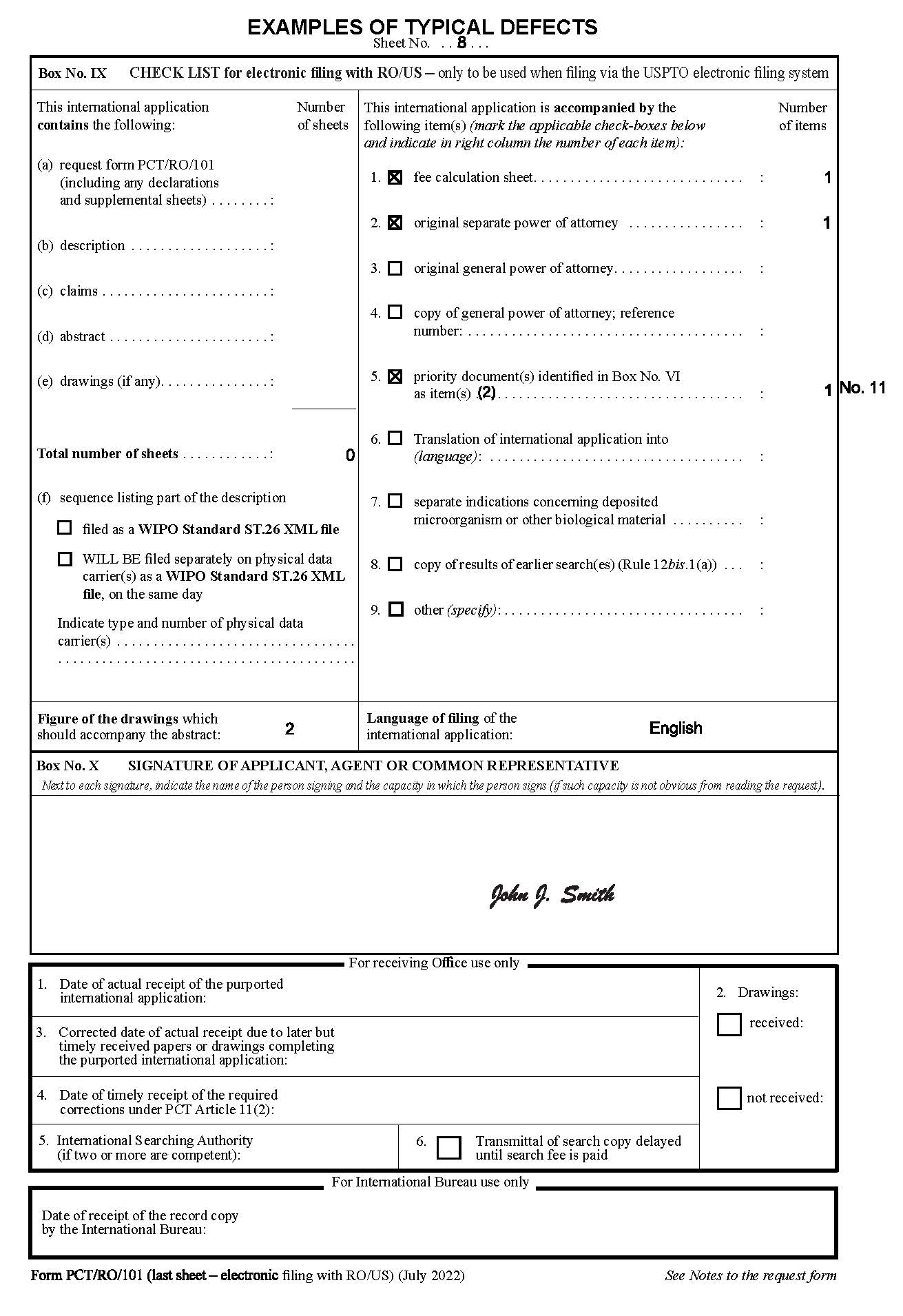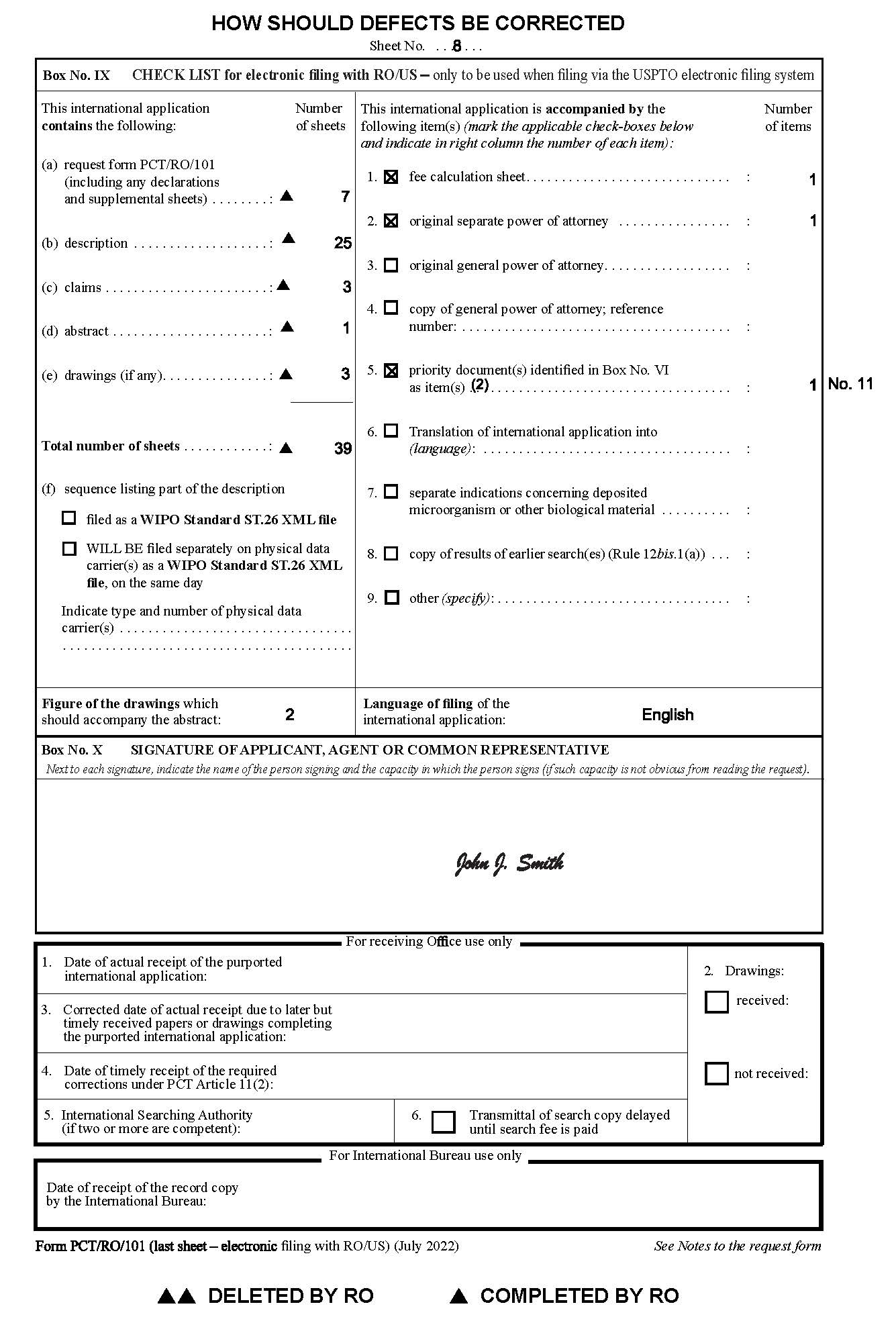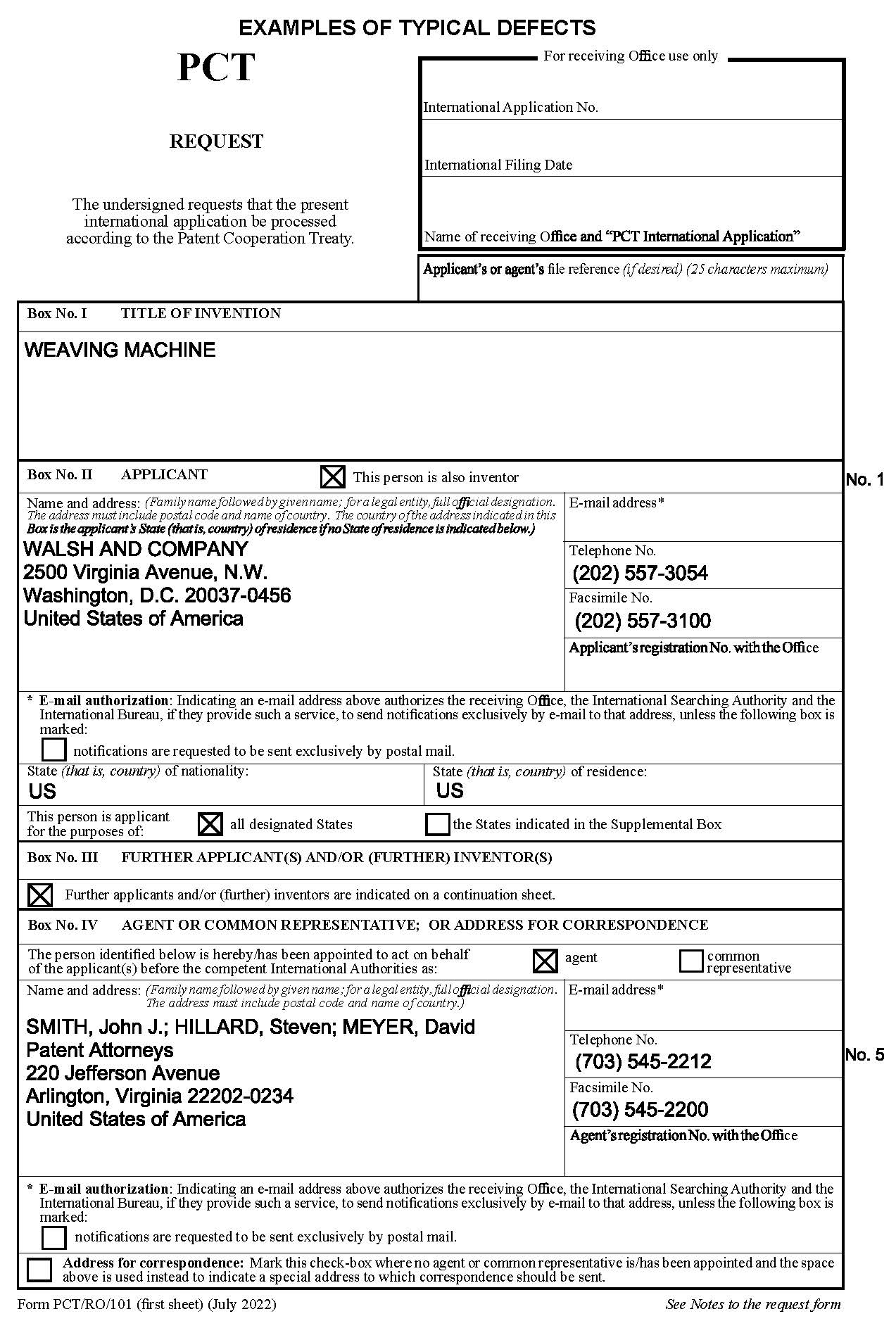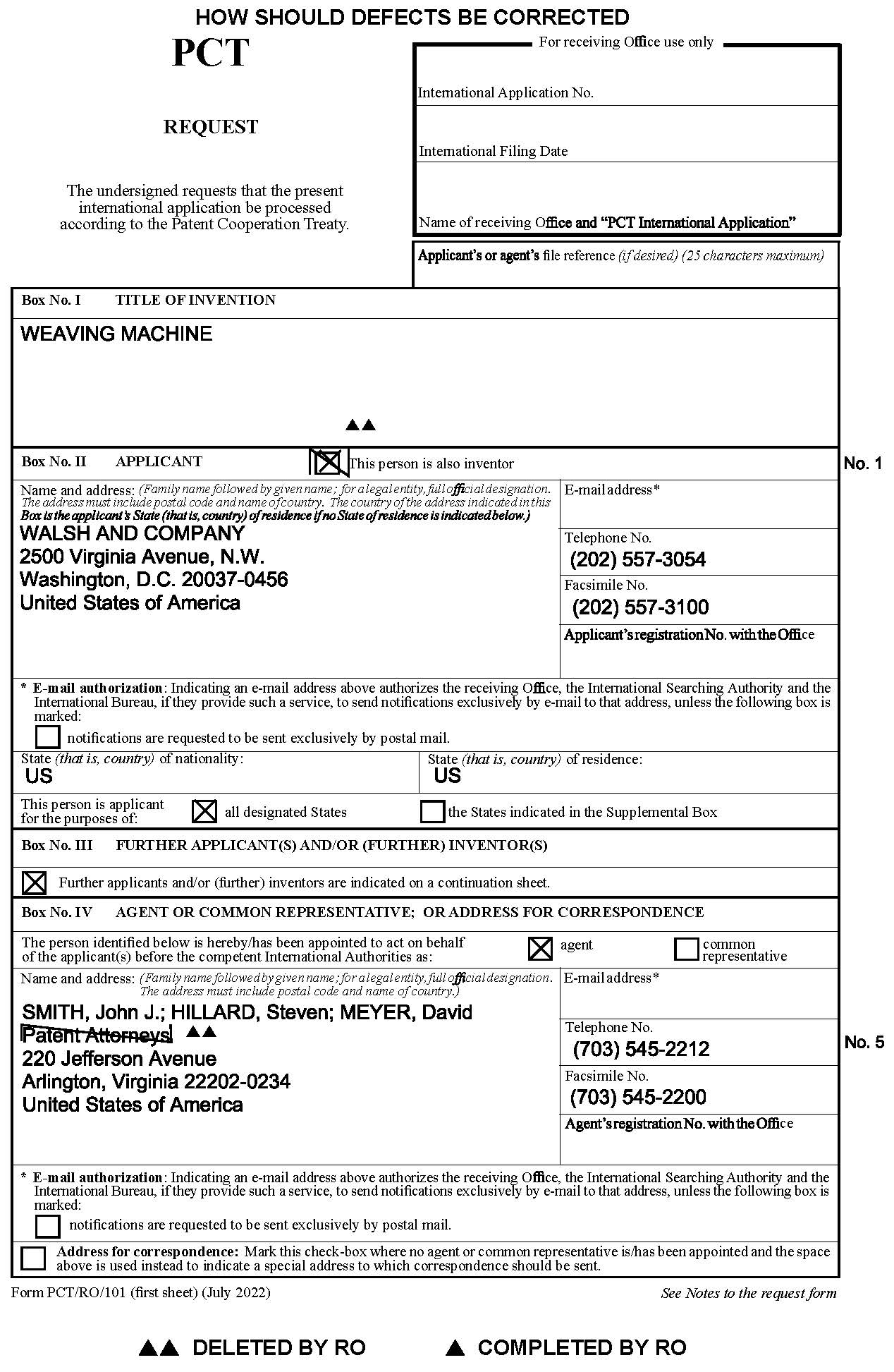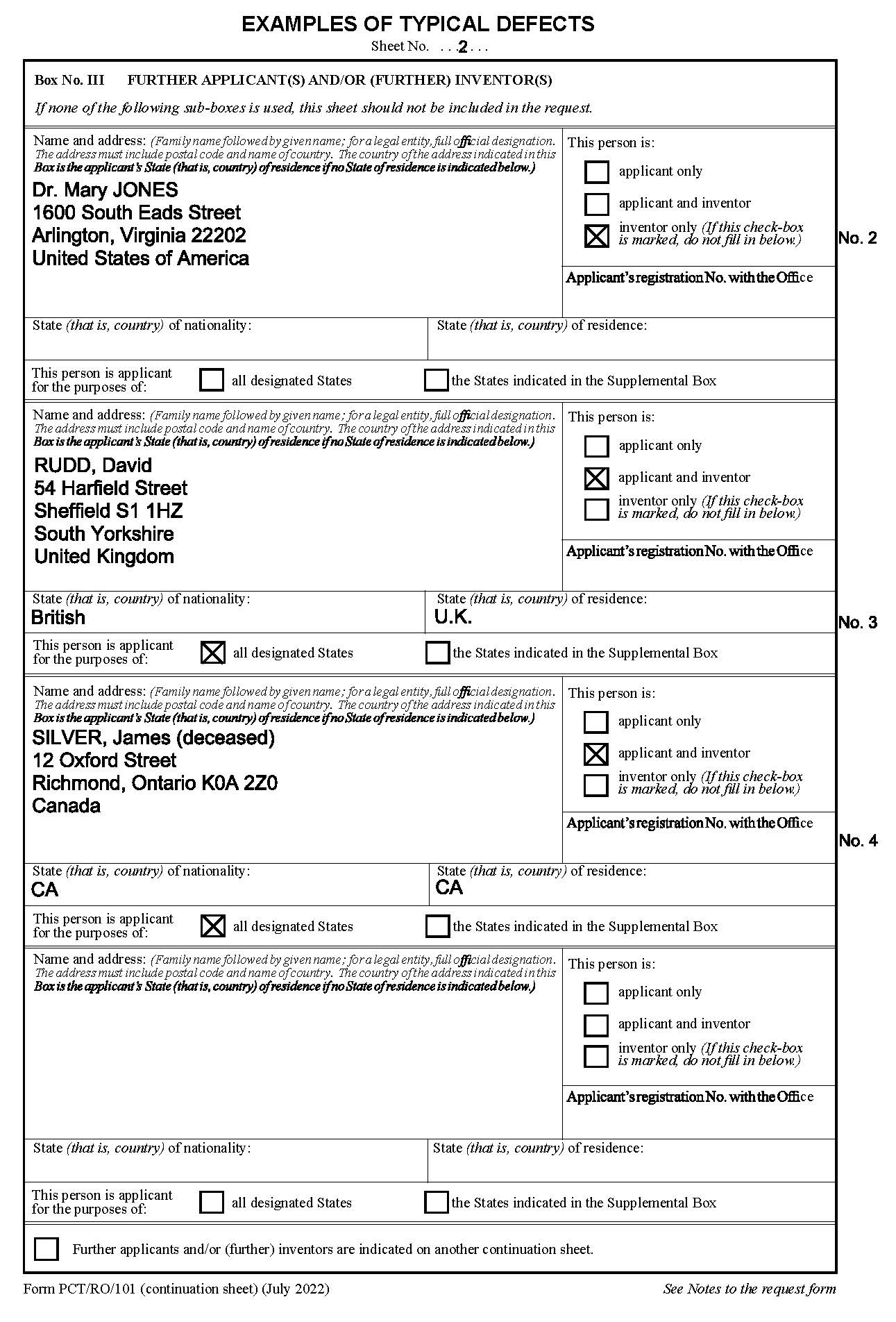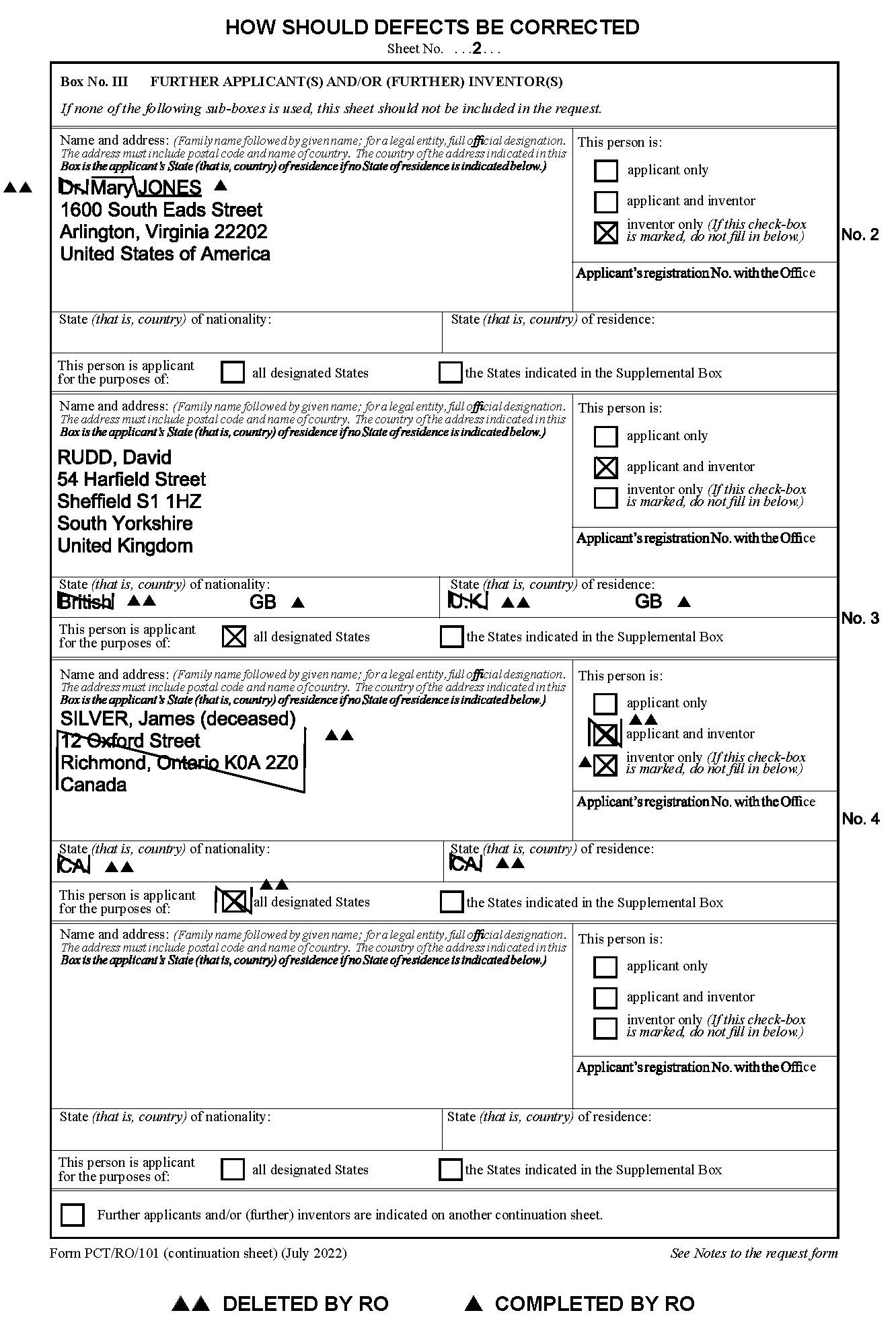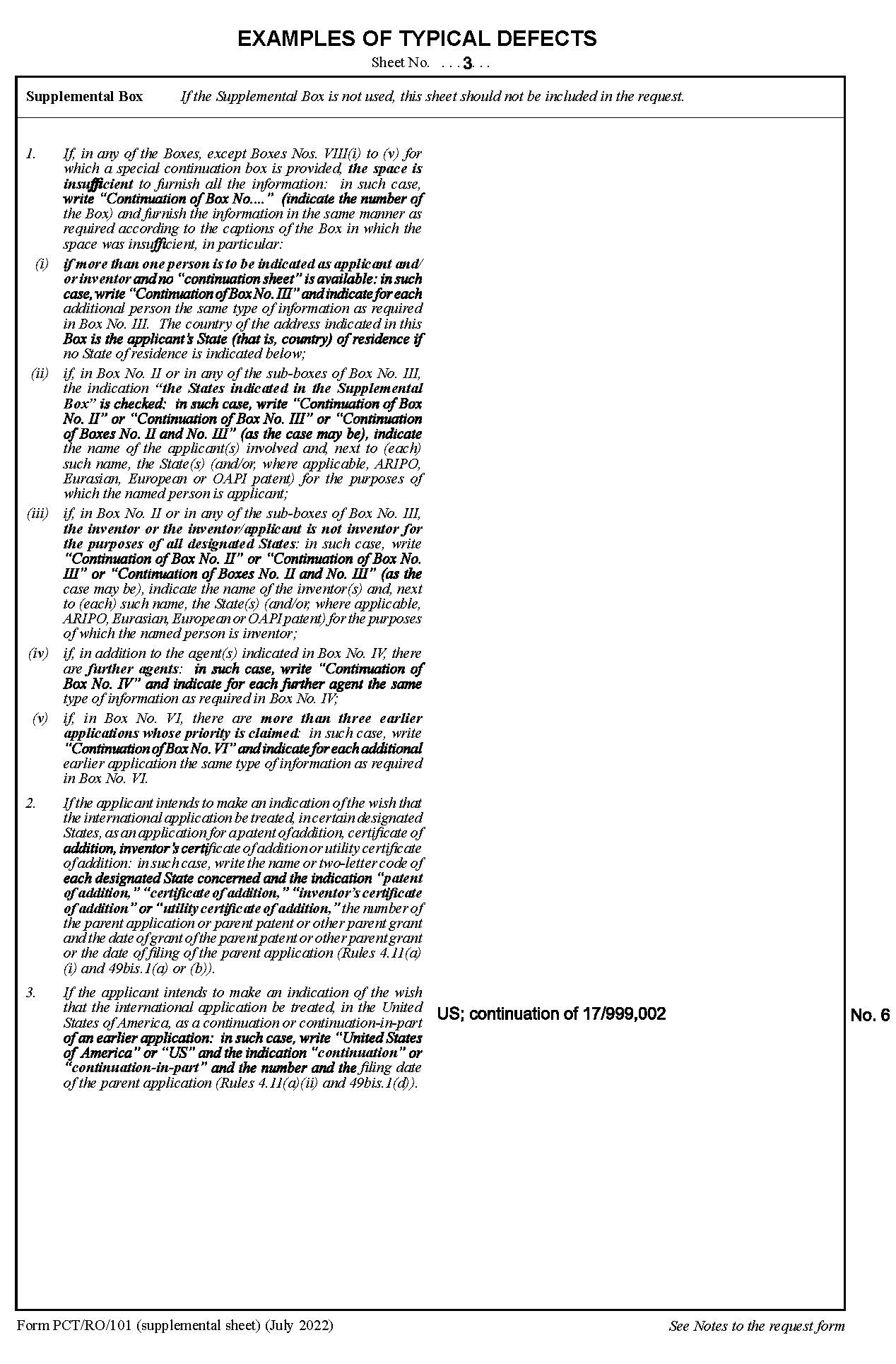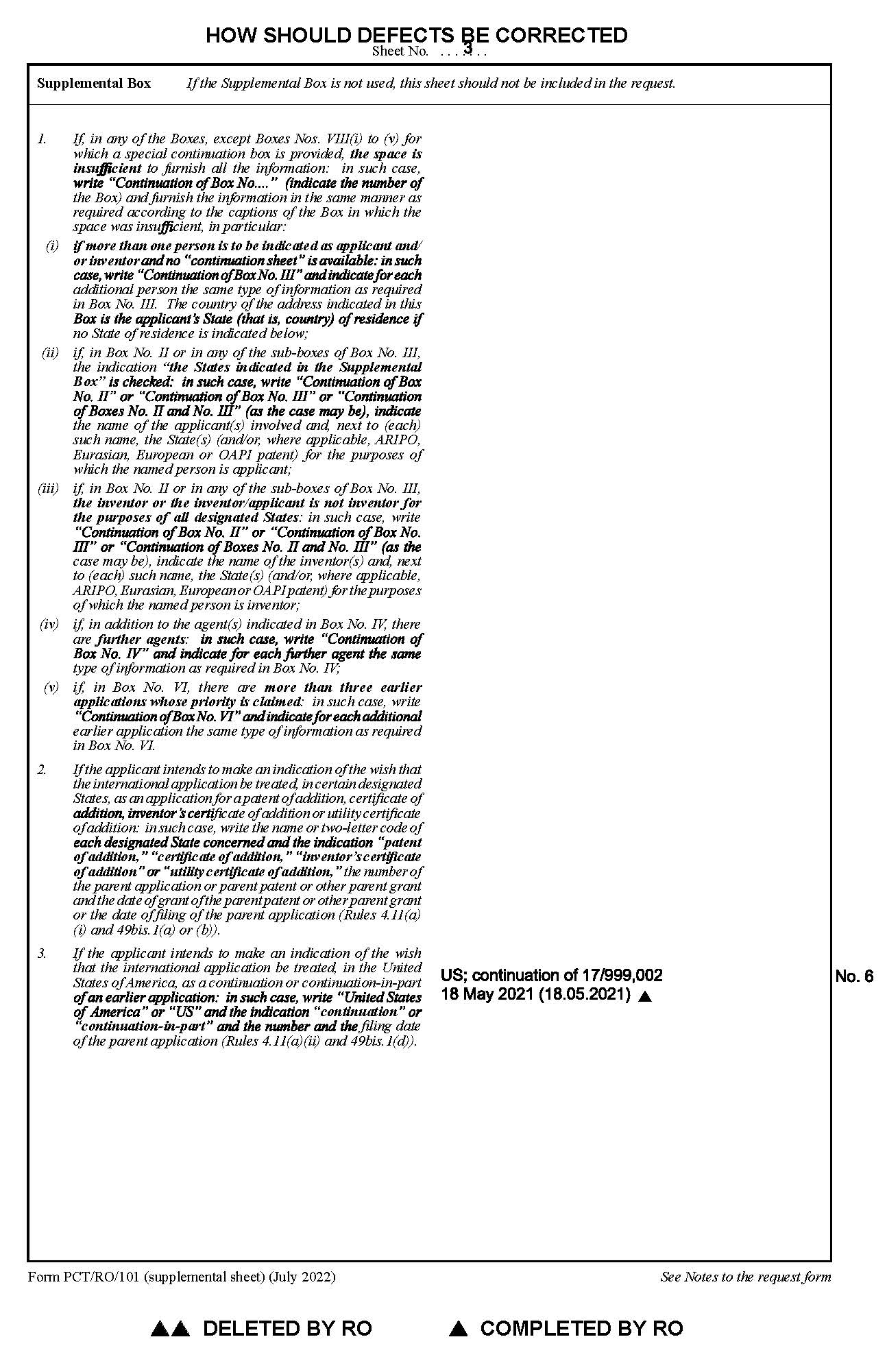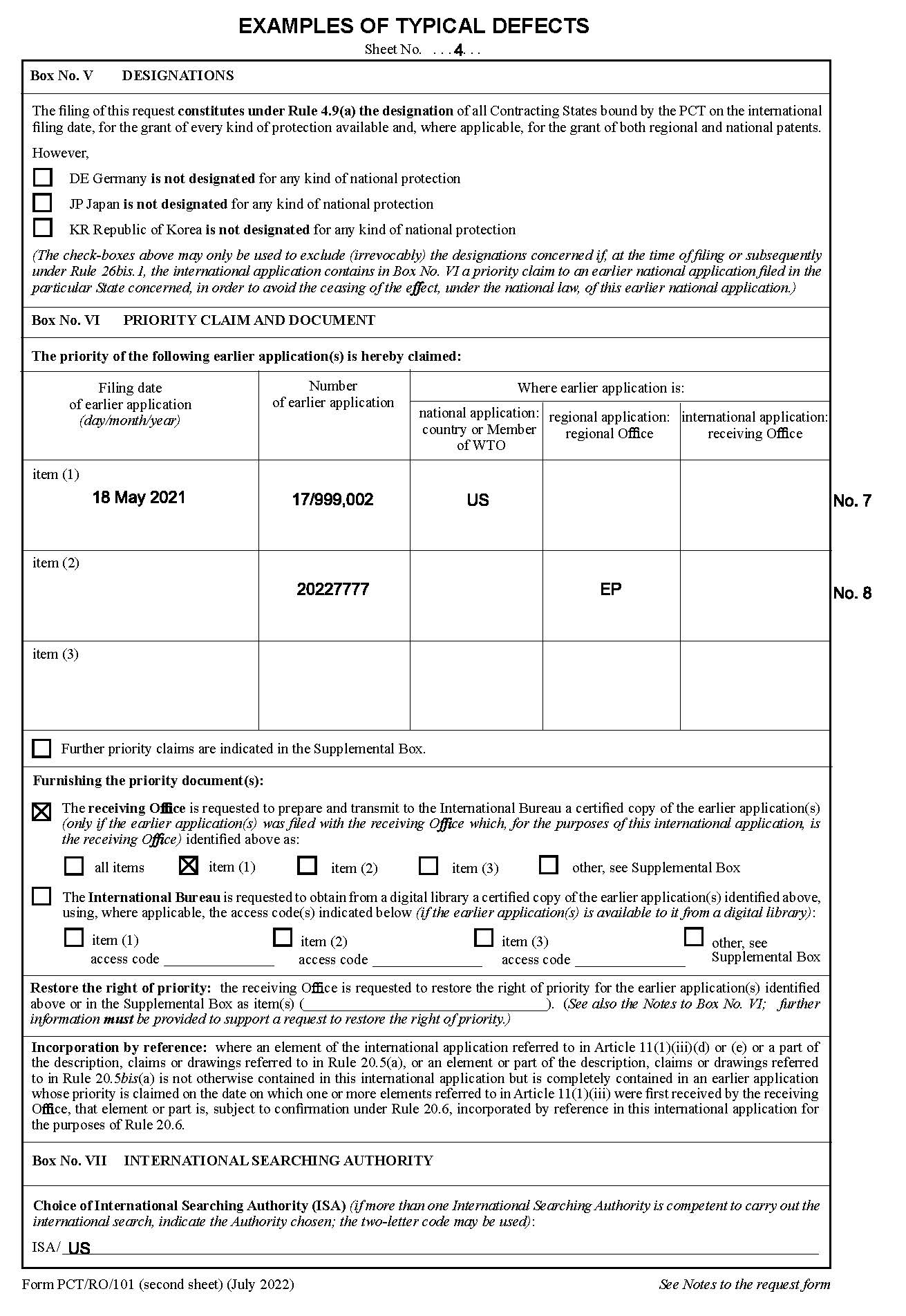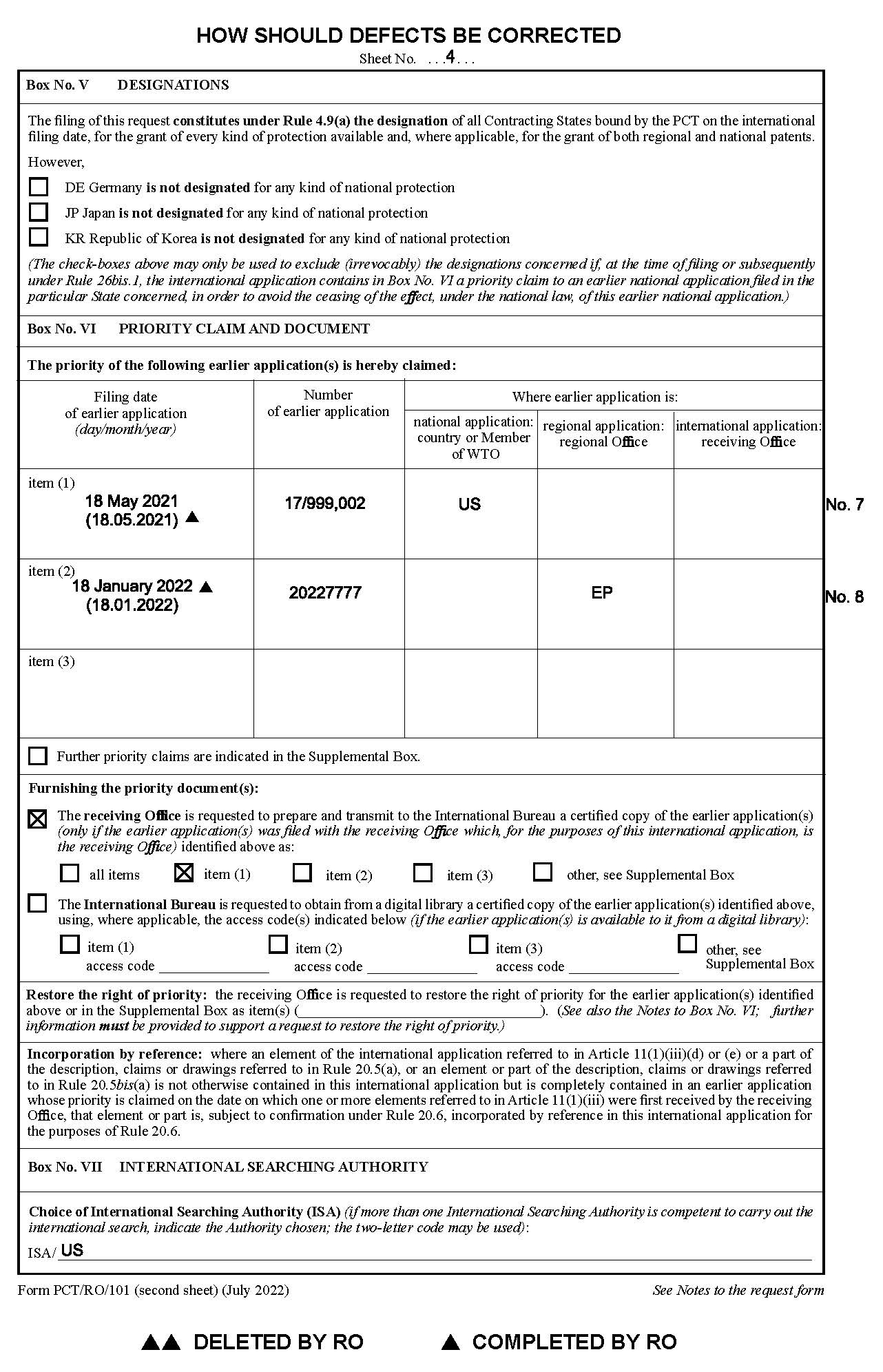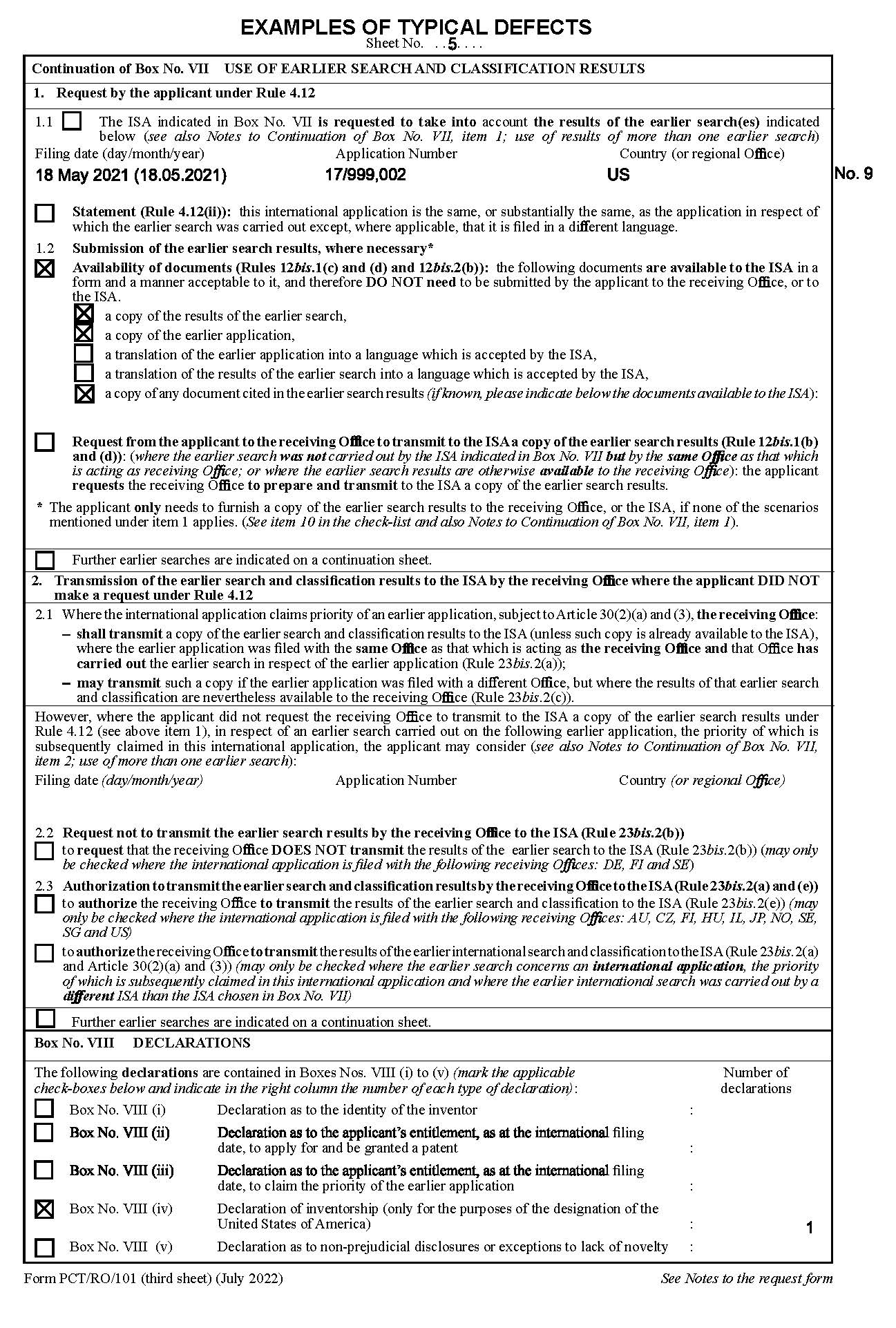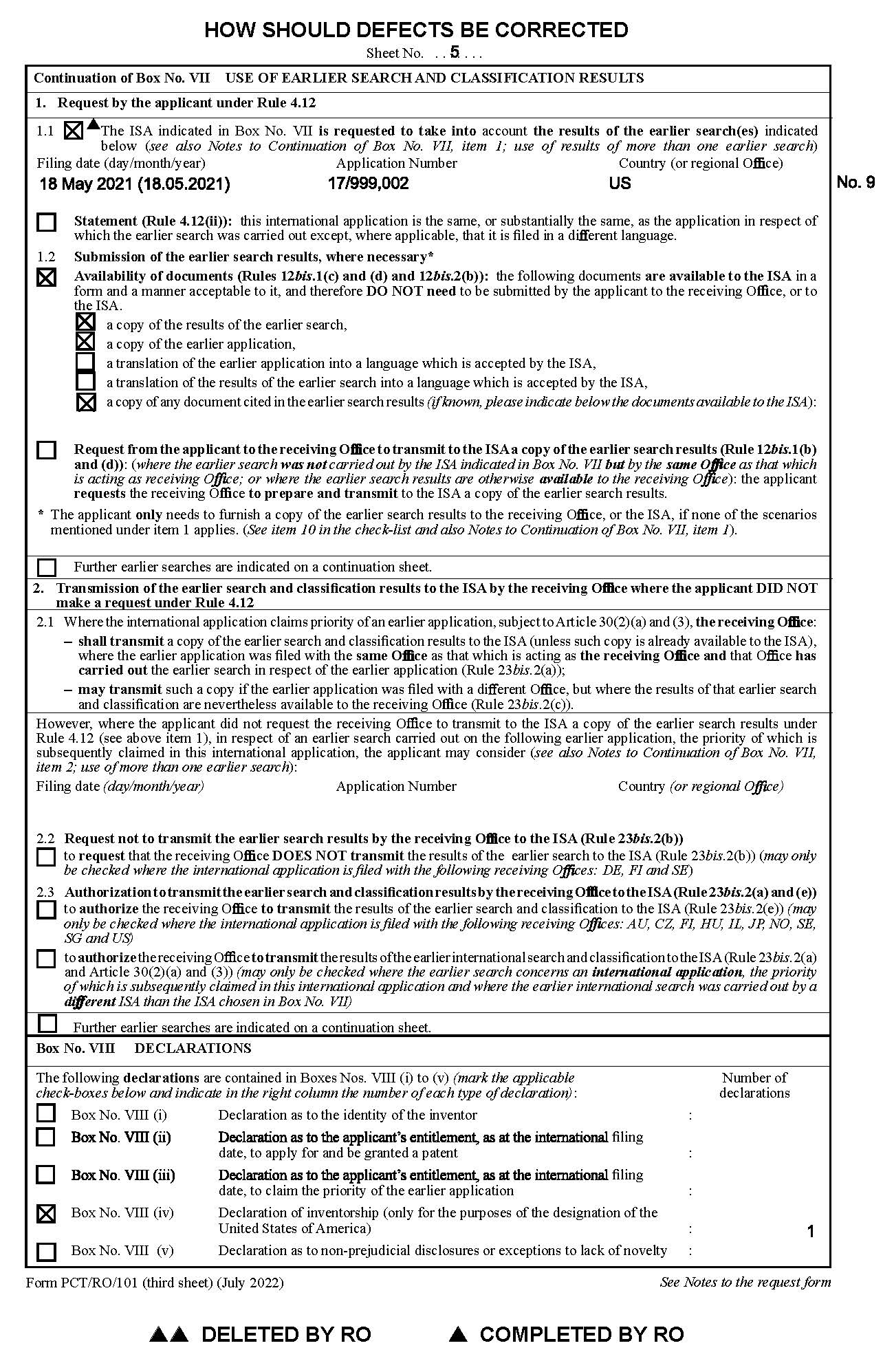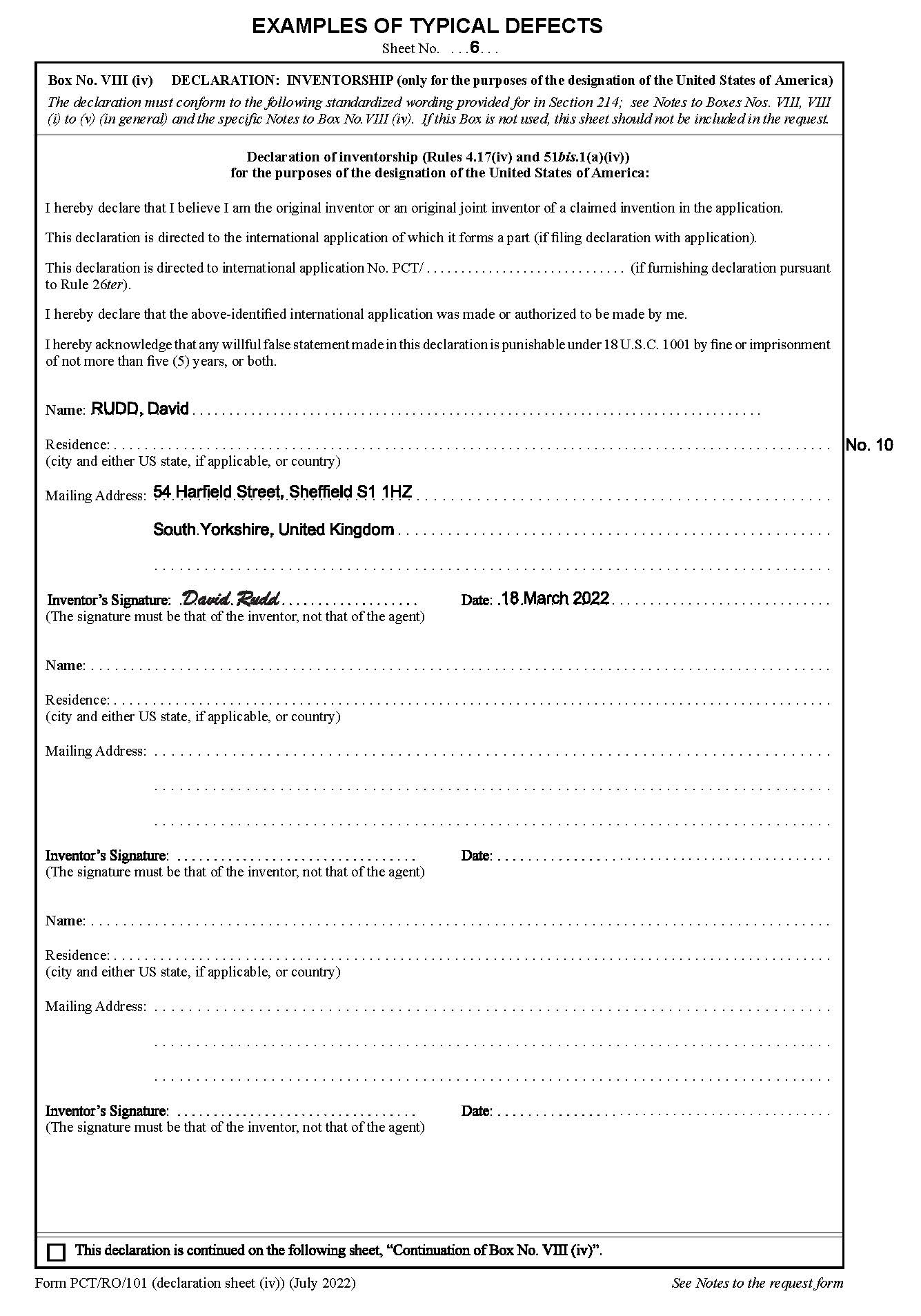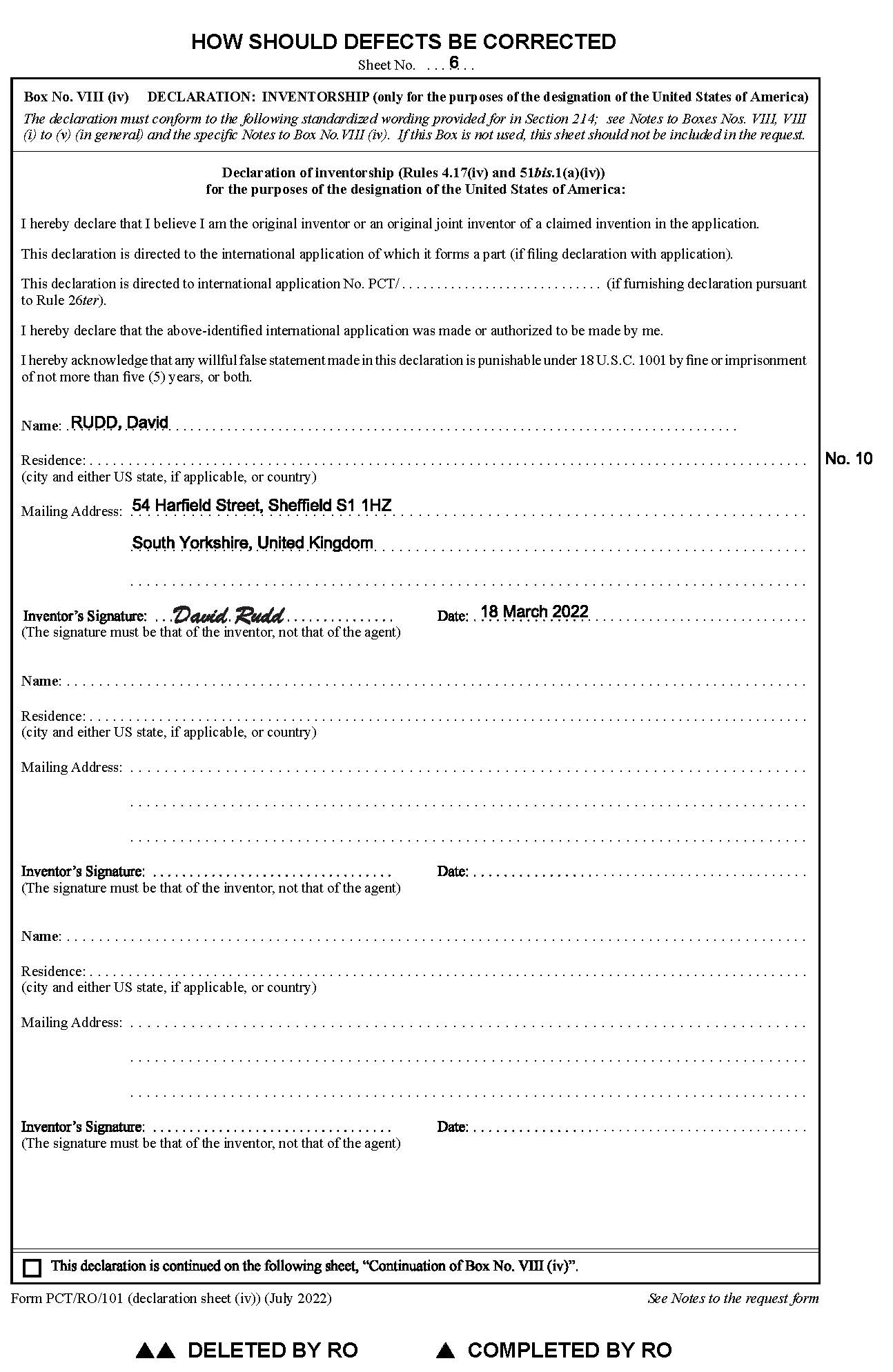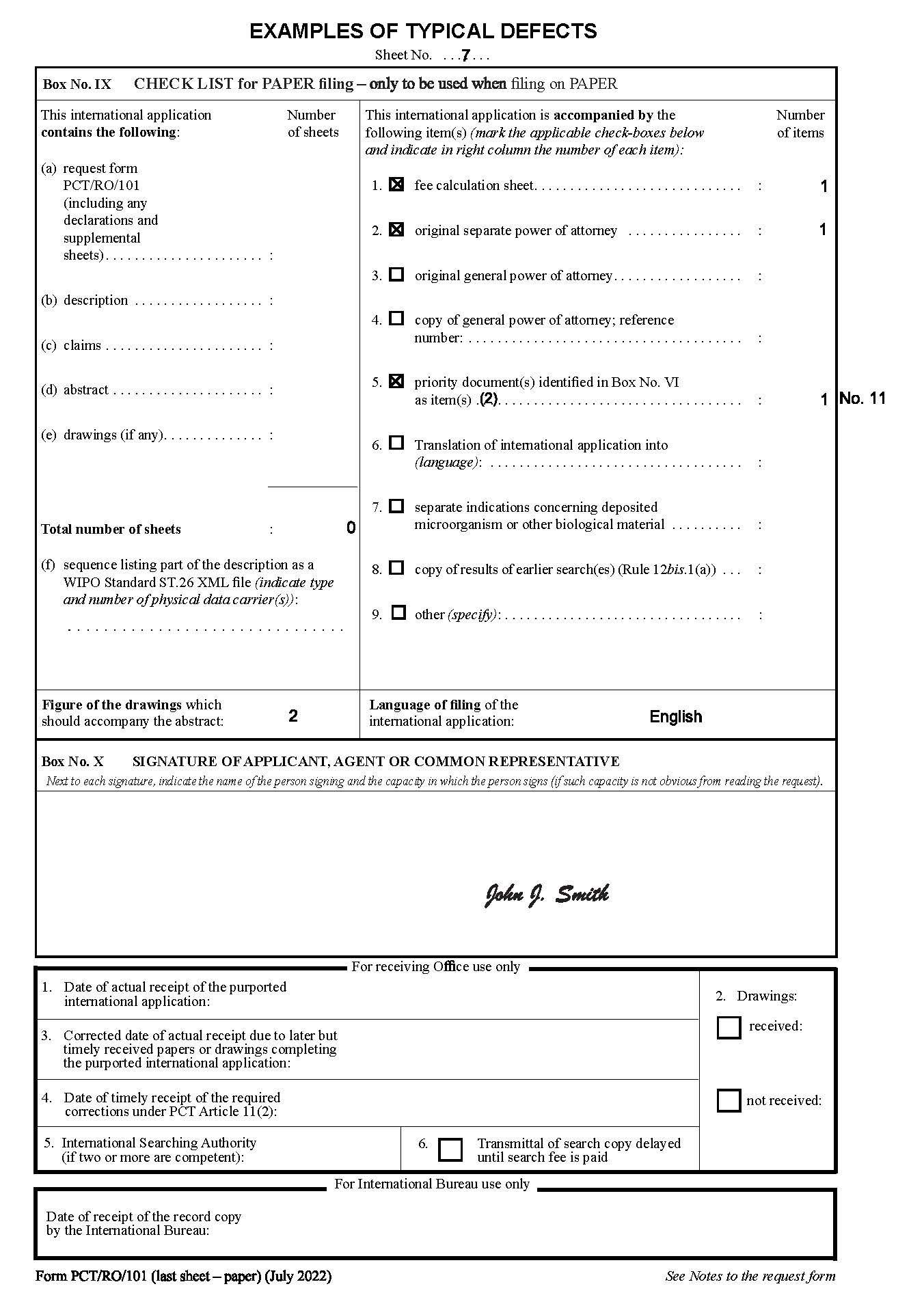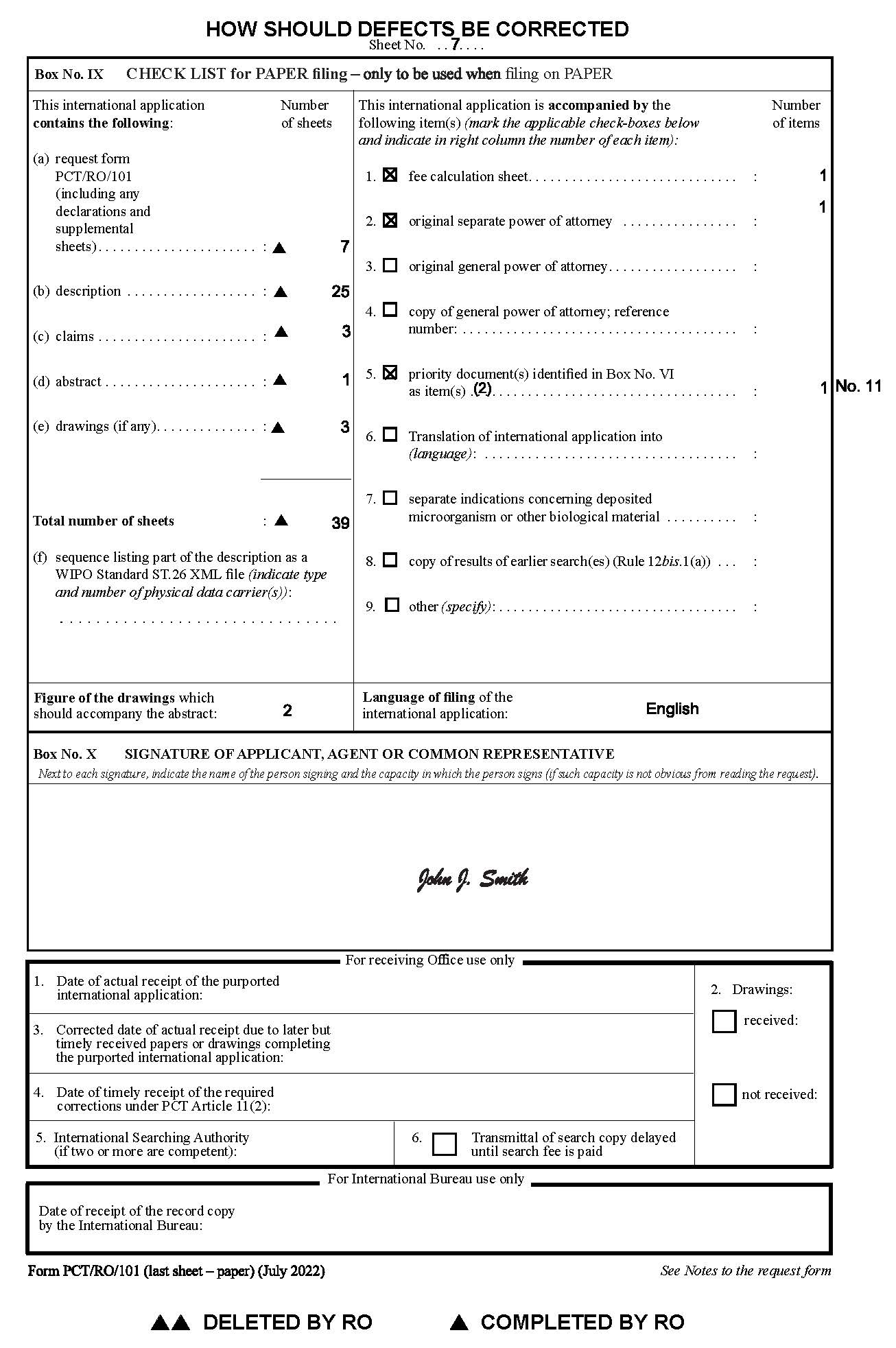PCT Receiving Office Guidelines
Annex B: Examples of Typical Defects in the Request and Corrections Thereof
This Annex contains examples of typical errors made by applicants in the request and examples of corrections which may be made ex officio by the receiving Office. The defects are shown on even-numbered pages and the respective ex officio corrections on the odd-numbered pages opposite. Comments on the various examples appear below. For references to Rules, Sections, etc., see paragraph 4.
Boxes Nos. II and III
Example No. 1:
A legal entity cannot be an inventor. Therefore, where the applicant is a legal entity, the check-box “This person is also inventor” must not be marked. See paragraph 88.
Example No. 2:
The family name of a natural person (applicant or inventor) must precede the given name(s). Academic degrees, titles or other indications, for example, Dr., Dipl.-Ing., Mrs., Mr., etc., must be omitted. See paragraphs 79 and 161A.
The indication of the State of nationality and the State of residence must be given for any person identified as “applicant only” or “applicant and inventor” (but need not be furnished for any person identified as “inventor only”). If the State of residence is not indicated, it is assumed that the country of the address indicated in that Box is the applicant’s State of residence and the receiving Office adds the name of that State ex officio. If the State of nationality is not indicated, it may only be added on the basis of information furnished by the applicant. The country may be indicated by the corresponding two-letter code (WIPO Standard ST.3). See paragraphs 82 to 85.
Example No. 3:
Nationality and residence must be indicated by the name of the State(s) concerned (Rules 4.5 and 18.1). Those indications must be made in accordance with Section 115. The country may be indicated by the corresponding two-letter code (WIPO Standard ST.3). However, under Rule 26.2bis(b), if there is more than one applicant, the receiving Office does not invite the applicant to furnish missing indications of the address, the nationality and the residence, if those indications are provided in respect of at least one of the applicants who is entitled to file the international application according to Rule 19.1. See paragraphs 82 to 87A.
Example No. 4:
Where the inventor died before the international application was filed, the request must indicate only the name of the inventor with an indication that the inventor is deceased. The check-boxes “applicant only” or “applicant and inventor” must not be marked. The check-box “inventor only” must be marked. See paragraph 97.
Since the person indicated in this example is “inventor only,” no indication of address, nationality or residence should be given and none of the check-boxes regarding the designated States for which a person is applicant must be marked. See paragraph 88.
Box No. IV
Example No. 5:
Where agents are appointed, the request must contain only their names and addresses, without any other indication, except that the check-box “agent” must be marked. For PCT purposes, titles, academic grades, etc., are not considered as part of the name and should, therefore, not be included. See paragraph 118.
Supplemental Box
Example No. 6:
Where reference to a “continuation” is made, both the number and the filing date of the parent application should be indicated. See paragraph 116A.
Box No. VI
Example No. 7:
Dates must be indicated in accordance with Section 110. See paragraph 163.
Example No. 8:
Where the priority of an earlier application is claimed but the corresponding priority claim does not contain the date of filing of that earlier application, the receiving Office must invite the applicant to correct the priority claim within a time limit of 16 months from the priority date or, where the correction would cause a change in the priority date, 16 months from the priority date as so changed, whichever 16-month period expires first, provided that such notice may be submitted until the expiration of four months from the international filing date (Rules 26bis.1(a) and 26bis.2(a))(ii) and (iii). If the applicant furnishes the date of filing, the receiving Office enters the date in the request and enters, in the margin, the letters “RO”. If, in response to such invitation and before the expiration of that time limit, the applicant does not furnish the date of filing of the earlier application, the priority claim is, for the purposes of the procedure under the PCT, considered not to have been made (Rule 26bis.2(b)). See paragraphs 166 to 172.
Box No. VII
Example No. 9:
If the applicant wishes the International Searching Authority to take into account, in carrying out the international search, the results of an earlier search, the applicant must so indicate in the request form (Rule 4.12) by marking the corresponding check box (see paragraphs 116A to 116D).
Box No. VIII (iv)
Example No. 10:
Even though the indication of residence is clearly missing, the receiving Office must not use any indication appearing elsewhere in the declaration or the rest of the request to make any ex officio correction to the declaration (or for that matter, to any of the other declarations which may be included in the request). The receiving Office may invite the applicant to correct the declaration. See paragraphs 192A to 192F.
Box No. IX
Example No. 11:
The check list must be completed by the applicant, failing which the receiving Office makes the necessary annotations. See paragraphs 149 and 150.
